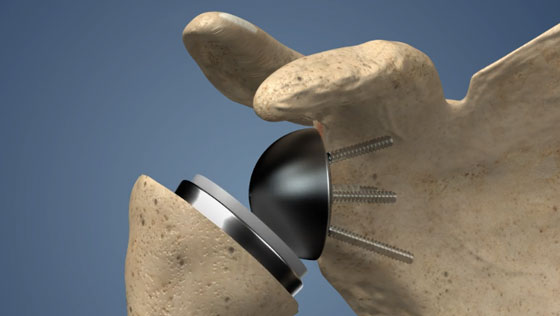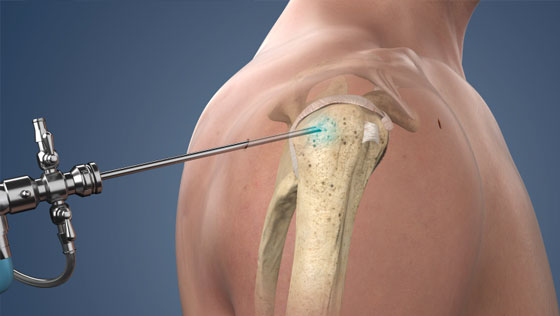What is Total Shoulder Replacement?
Total shoulder replacement (also known as TSR, total shoulder arthroplasty, TSA, or anatomic total shoulder replacement) is a surgical procedure performed to replace damaged portions of the shoulder joint with an artificial implant.
Key statistics about Total Shoulder Replacement
- Nearly 825,000 individuals in the United States are living with a shoulder replacement[1]
- Total shoulder replacement is the third most common joint replacement procedure[2]
- In the past 15 years, the number of individuals who undergo total shoulder replacement surgery has increased by more than 300%[2]
- 92% of individuals who undergo total shoulder replacement report successful results[3]
Expert Insights
What to Expect from Total Shoulder Replacement - Jason Klein, MD
Shoulder Anatomy
The shoulder is a ball-and-socket joint formed by three bones: the humerus, the scapula, and the clavicle. The head of the humerus rests in the socket of the scapula, also called the glenoid.

The rotator cuff is made up of a group of four tendons and muscles that surround the shoulder joint. These muscles are the subscapularis, the supraspinatus, the infraspinatus, and the teres minor, and together they work to stabilize the joint and move the arm.

Why is Total Shoulder Replacement performed?
Total shoulder replacement is performed primarily to relieve pain and stiffness caused by arthritis. Arthritis occurs as the cartilage that cushions the shoulder wears down, causing the bones to grind against each other. This results in pain and inflammation, and can lead to bone deformity and a loss of joint mobility.
When the cartilage damage from arthritis is so severe that all cartilage must be removed, a total shoulder replacement is performed. If there is also severe damage to the rotator cuff or rotator cuff arthropathy, a reverse total shoulder replacement may be recommended instead.

Who needs Total Shoulder Replacement?
Total shoulder replacement typically is recommended for patients who suffer from arthritis, which may be the result of normal wear and tear due to aging (osteoarthritis), or may be caused by a shoulder injury (post-traumatic arthritis) or autoimmune disorder (rheumatoid arthritis).
Total shoulder replacement may be necessary to address pain, weakness and shoulder joint dysfunction that cannot be treated with nonsurgical measures.
How is Total Shoulder Replacement performed?
- The surgeon will make an incision and access the shoulder joint.
- The head of the humerus is removed.
- The glenoid surface is cleaned and prepared for the implant.
- The surgeon will insert the humeral stem implant into the bone and secure the ball portion of the implant to the humeral stem.
- The bones and implants of the shoulder joint are placed back into proper position, and the incision will be closed with sutures or surgical staples.
What are the risks of Total Shoulder Replacement?
Potential risks associated with total shoulder replacement may include:
- Infection
- Blood clots
- Nerve or blood vessel damage
- Joint instability
- Joint stiffness
- Loosening or wearing down of the implant over time
How long does it take to recover from Total Shoulder Replacement?
-
1-3 days after surgery
Most patients are discharged from the hospital. A physical therapy routine will be established by the surgeon and physical therapist, and pain medication may be prescribed. A sling will be provided, but it is important that prescribed exercises are followed in order to prevent the development of any weakness or stiffness. -
2 weeks after surgery
Any non-dissolvable sutures and staples are removed and bruising and swelling begin to subside. -
6-8 weeks after surgery
Most patients are able to discontinue use of the sling and resume most daily activity. -
6 months after surgery
Most patients report being pain-free, but it may take some patients up to 12 months to fully recover from total shoulder replacement.
What are the results of Total Shoulder Replacement?
Total shoulder replacement alleviates pain and restores shoulder function for a wide variety of patients, and the surgery has a high degree of patient satisfaction. 92% of individuals who undergo total shoulder replacement report successful results[3].
Find an Orthopedic Doctor in Your Area




